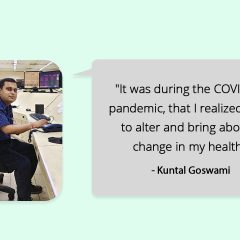
Over the years my work has led me to believe that we need a fundamentally different way of looking at health care. We need a system that works beyond simply just looking at the symptoms that brings people into the clinics and instead is actually able to look and improve health where it begins. Health does not begin in the 4 walls of a doctors’ office or a hospital, but where we live, we work, we eat, sleep, learn and play.
Are you struggling with disease, pain, taking more medicines and spending more time with the doctors? Are you still sick?
Are you scared of the onset of disease, of flu’s, of cancers ?
We may be living in a polluted world, with pesticide laden foods, water that we think is clean and pure, but may not be, breathing in oxygen that consists or several deadly carcinogens, using cosmetics and hair colours laden with chemicals, microwaves, eating toxic junk food… the list goes on..
And we keep running around, like headless chickens, searching for the next best healthiest option, getting sucked into fads, diet programs, dangerous exercise programs, believing in the media, in what our social circles say, in what Bollywood and Hollywood blinds us with.
Eminent Doctors/Nutritionists across the U.S have T.V. shows that inspire the masses with their latest take on weight loss pills that work… first there was green bean coffee extract, then there was raspberry ketones, then Garcinai Cambogia. If these worked, there would be no one struggling with weight issues.
Stop all of this, step back and really slow down.
Yes it’s a crazy world, and people are going to get sicker by the day, and there are going to be more Antibiotics, Cancer, Diabetes, Thyroid drugs that pharmas will continue to flood our communities with. But, guess what, it’s all of this that is not allowing us to get healthier.
Your body is designed to heal itself, if you give it a chance. I’m not saying stop medication. If it works, do it. But, aim to understand what got you on that medication, what’s the trigger and then sort that out so you don’t have to stay on medicines. Don’t get reliant on the medication and continue to live without making changes in your lifestyle.
The answer to disease prevention and cure is ‘IMMUNITY’. It is your body’s first and last line of defense against all diseases .
We all know that Nutrition, Exercise, Stress and Sleep are the aspects that work together to contribute towards a strong immunity.
Over and above this my first recommendation would be for everyone to understand their ‘lymphatic system, and how it works in each of our body’s.
Having a lymphatic system that works well, is the first step towards a super strong immune system.
The lymphatic system is closely related to the cardiovascular system and is sometimes referred to as the body’s secondary circulatory system. Its major function is that of a defense mechanism and it is a key to the body’s immune defenses. The lymphatic system includes the lymph vessels (four times more than blood vessels), lymph nodes, tonsils, spleen and thymus gland. Lymph is the colorless fluid containing white blood cells that bathes the tissues and drains through the lymphatic system.
The lymphatic system:
– Distributes fluid and nutrients throughout the body
– Assists in draining off excess fluids and protein left behind by capillary circulation activity, preventing tissues from swelling
– Removes toxins
Furthermore, when toxins are produced within the body faster than the body can process and release them, the body suspends those toxins in fat and interstitial spaces in an attempt to protect the organs. This toxic buildup results in soft and connective tissue inflammation and excessive buildup of lymph fluid which contributes to fibromyalgia, chronic fatigue, cancer and a multitude of immune system disorders.
To be continued ….


 Who doesn’t want a radiant, glowing and youthful complexion? Little do we know, our skin is like the blueprint of what goes inside the body, stress levels, sleep and lifestyle in general!
Who doesn’t want a radiant, glowing and youthful complexion? Little do we know, our skin is like the blueprint of what goes inside the body, stress levels, sleep and lifestyle in general!


